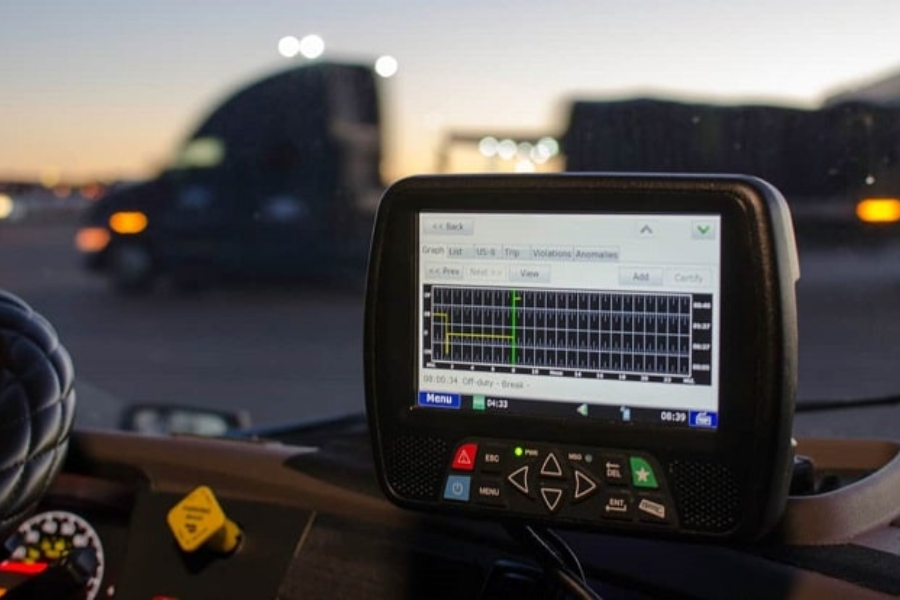Top Benefits of Implementing Electronic Logging Devices in Your Fleet Operations
Table of Contents
- Introduction to Electronic Logging Devices (ELDs)
- Enhanced Compliance and Safety
- Increased Operational Efficiency
- Cost Savings
- Improved Driver Management
- Data Accuracy and Insights
- Future-Proofing Fleet Operations
Introduction to Electronic Logging Devices (ELDs)
Electronic Logging Devices, commonly known as electronic logging devices, have revolutionized the trucking industry. These devices automate the tracking of driving hours, ensuring compliance with industry regulations. Initially, the transition to ELDs met some resistance due to concerns over costs and driver privacy. However, as more fleets adopted this technology, the numerous benefits of ELDs became evident, making them an indispensable tool in modern fleet management.
ELDs are proliferating as fleet managers realize their ability to optimize operations and boost efficiency. Numerous companies have seen notable enhancements in operational metrics following the adoption of ELDs. Let’s explore the diverse benefits of these devices, including their impact on compliance, safety, cost savings, and environmental advantages.
Enhanced Compliance and Safety
One of the most significant advantages of ELDs is their role in improving compliance and safety. By automating the recording of driving hours, ELDs help drivers adhere to Hours of Service (HOS) regulations, which are critical in reducing the risk of fatigue-related accidents.
Drivers who follow Hours of Service (HOS) laws are less likely to experience weariness, which is a significant cause of road accidents.
According to a study, ELDs can prevent accidents by ensuring drivers take the necessary breaks. Studies have shown that enhanced compliance with HOS rules correlates with decreased road accidents.
The National Transportation Safety Board (NTSB) has noted multiple cases where driver fatigue contributed to accidents. ELDs are essential for enhancing road safety by ensuring adherence to regulations and preventing such occurrences.
Increased Operational Efficiency
ELDs provide fleet managers with real-time data on vehicle locations, driver statuses, and other critical metrics, enabling better route planning and scheduling. This real-time insight can significantly reduce downtime and optimize fuel consumption, contributing to more streamlined and productive operations. For instance, if a driver encounters unexpected traffic or a road closure, the fleet manager can quickly reroute them to avoid delays.
- Optimizing Routes: The real-time tracking capabilities of ELDs allow for dynamic route adjustments based on traffic conditions and other variables. This saves time and conserves fuel, leading to cost-efficient fleet operations. Additionally, real-time tracking helps monitor performance and predict needs, enhancing operational efficiency.
Cost Savings
Implementing ELDs can lead to considerable cost savings. Fleets can substantially decrease operational costs by reducing administrative burdens and improving fuel efficiency. Automated logging eliminates manual paperwork, freeing time for drivers and administrative staff.
This increases production while reducing the possibility of costly human errors.
- Reduced Paperwork: Gone are the days of manual logbooks. ELDs automate record-keeping, reducing the time and effort required to maintain logs. This minimizes administrative burdens and lowers the chances of human error. Fleets can save on paper logs and storage costs while ensuring that records are accurate and easily accessible in digital format.
Improved Driver Management
ELDs allow fleet managers to monitor driving behaviors better and give targeted training or remedial feedback. Focusing on continual improvement can result in a safer and more productive workforce. Managers can use ELD data to uncover patterns in driving behavior that may indicate the need for additional training or disciplinary action. This proactive strategy contributes to sustaining high levels of safety and performance.
- Driver Performance Insights: ELDs offer invaluable insights into drivers’ performance, including speed, harsh braking, and idling times. Fleet managers can utilize this data to pinpoint top performers and provide extra training for those who need it. Fleets can enhance overall safety and efficiency by cultivating a culture of accountability and ongoing improvement.
Data Accuracy and Insights
ELDs deliver accurate and reliable data for analysis and reporting. Fleet managers can utilize this information to identify patterns, predict trends, and make informed decisions. Accurate data also simplifies the audit process, making compliance checks more straightforward. The ability to generate detailed reports allows fleets to track performance metrics, such as fuel efficiency and driver productivity, over time.
- Database Management: Accurate and comprehensive data collection by ELDs allows for better database management, which can be crucial during compliance audits or legal disputes. This makes the fleet operations more transparent and reliable. Well-maintained records can help protect the company in litigation or regulatory inquiries, ensuring that all operations are conducted within legal and safety guidelines.
Future-Proofing Fleet Operations
As the transportation industry evolves, embracing technology is essential for staying competitive. ELDs are a step towards the future, ensuring fleet operations align with modern standards and seamlessly adapt to upcoming regulatory changes. Integrating ELDs with other digital tools and platforms further enhances their value, making fleets more adaptable to future technological advancements.
- Upcoming Technological Advances: ELDs are continually being updated with new features and capabilities, making them indispensable tools for fleet management. This readiness for future upgrades and regulatory changes ensures that fleets can stay ahead of the curve. By investing in ELD technology, fleets can take advantage of emerging trends and innovations in the transportation industry.






